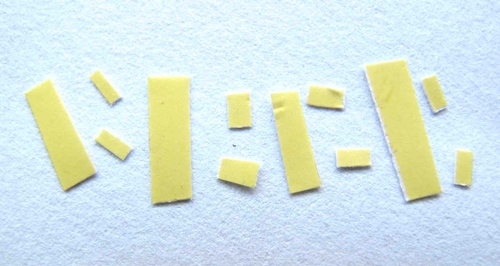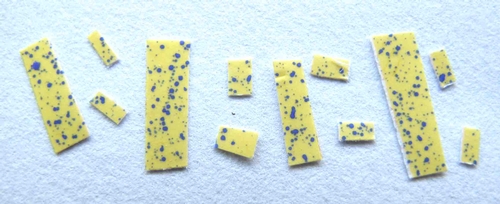An Evaluation of the Theory of Target Pest Surface Area to Mass Ratio to Actual Pest Management Practice
A very important concept for all pest managers to understand is that the smaller the target insect is, the higher the ratio of surface area of its body becomes in comparison to its mass. Since most insecticides are applied to the surface of the insect, this theoretically means that one is able to deliver a higher dose of insecticide per unit weight of the smaller insect than the larger and subsequently control the smaller more readily.
To demonstrate, let us approach the problem mathematically.
Let us take a lygus nymph compared to a lygus adult. To simply the math, we assume both bug stages are completely spherical:
Surface area small nymph (1 mm radius): 12.6 sq mm
Volume small nymph: 4.2 cubic mm
Surface area adult (3 mm radius): 113 sq mm
Volume adult: 113 cubic mm
Now let us examine what happens when we spray each insect with a thin sheet of water of thickness 0.001 millimeter and consisting of 1% poison and which perfectly covers the surface area of both the lygus nymph and adult.
So, continuing with our calculations, the amount poison applied to the small nymph:
0.001 mm thickness of water sheet x 12.6 sq mm surface area = 0.0126 cubic mm water x 1% poison = 0.000126 cubic mm poison to the small nymph.
Divide the cubic mm volume poison by the volume of the small nymph:
0.000126 cubic mm poison/4.2 cubic mm = 0.00003 cubic mm poison per cubic mm pest
Amount poison applied to the adult:
0.001 mm thickness water x 113 sq mm surface area = 0.113 cubic mm water x 1% poison = 0.00113 cubic mm poison to the adult (10 times the poison as the small nymph!)
Divide the cubic mm volume poison by the volume of the adult:
0.00113 cubic mm poison/113 cubic mm = 0.00001 cubic mm poison per cubic mm pest.
Let us express cubic mm as milligrams (mg) as is often done (1 cubic mm water = 1 mg = 1 ml) to simplify the concluding explanation:
So, the 0.00003 mg poison per mg pest for the small nymph is 3 times the amount of 0.00001 mg poison per mg pest of the adult.
This is all fine and good, but now let us move from the mathematical theory to the reality of actual pesticide application. To begin, please consider the two photos provided by Ed Show which include strips of paper approximating lygus of two basic sizes, the longer being the 3/8" of an adult and the smaller approximating the size of a lygus nymph.
One can see very readily from this experiment that the problem with the mathematical theory is that of the assumption of perfect coverage of the lygus surface area with a thin sheet of water in my calculations, rather than using sprayed spaced droplets one can see in the second photo below. Clearly, the wider surface area has a higher probability of catching droplets than the smaller area, and the further apart the droplets tend to be, the lower the probability becomes of the smaller target getting hit with them. As a matter of fact, the droplets could be so far apart so as to even miss completely the smaller nymphal area, while delivering at least something of a dose to the adult.
With very, very closely spaced droplets, the greater the importance the surface area to mass ratio, but with droplets spaced more apart from one another the greater the importance of the surface area alone.
This comparison of the ideal and the practical argues heavily in favor of using lots of water carrier to create an abundance spray droplets, especially when dealing with a pest of small size. Water delivered in low gallonages and big droplets from low pressure delivery certainly packs more punch per droplet, but if it doesn't hit the target it will serve little purpose.

Blank spray paper approximately surface area of a lygus bug, the smaller being the nymph and the larger the adult. Photo courtesy Ed Show.

Applicator spray pattern. Notice how random pattern of droplets favors accumulation on a larger surface area. Photo courtesy Ed Show.

